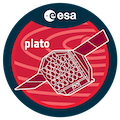Speaker
Description
The recently discovered super-Earth Gl 514 b, orbiting a nearby M0.5-1.0 star at 7.6 pc, is one of the best benchmark exoplanets for understanding the potential climate states of eccentric planets. The elongated (𝑒 = 0.45+0.15 −0.14) orbit of Gl 514 b, which only partially lies in the Conservative Habitable Zone, suggests a dynamically young system, where the spin-orbit tidal synchronization may not have yet occurred up to the present time. In the present work, we use a seasonal-latitudinal energy balance model, EOS- ESTM, to explore the potential impact of both constrained and unconstrained planetary, orbital and atmospheric parameters on the Gl 514 b habitability, mapped in terms of surface temperature. We test three distinct CO2-dominated atmospheres by varying the CH4 concentration values (0%, 0.1% and 1%) and the total surface pressure. As a general trend, we find that habitable conditions are favoured by high-CH4 and high-pressure regimes. Habitability also increases for high axis obliquities (at least until the appearance of an icebelt), long rotation periods, and high ocean fractional coverage. If the ocean fraction is low, then also the argument of periastron becomes relevant. Our results are robust against changes of the continental distribution. Thus, we conclude that Gl 514 b can potentially maintain temperate surface conditions with modest seasonal temperature variations under a wide variety of planetary, orbital and atmospheric conditions. Despite no transit have been detected yet, the results found in this work should motivate the community to invest time in future observations.

